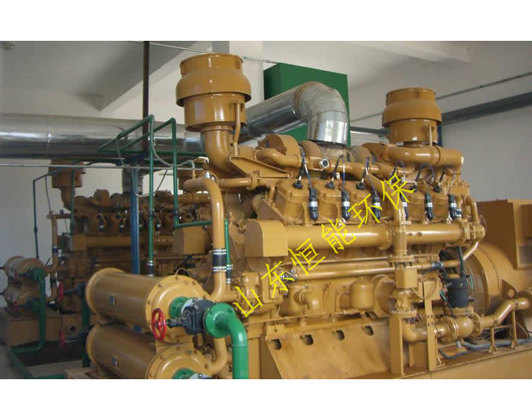在节能减排政策的贯彻落实过程中,许多企业打算利用污水处理站的沼气来替代天然气进行锅炉燃烧或发电。因此,在沼气利用生物脱硫工艺,成为电厂和站长选择的难点。目前,较常用的脱硫工艺有干法、湿法和生物脱硫,本文将对这三种方法进行简单的说明和对比。
In the process of carrying out energy-saving and emission-reducing policies, many enterprises intend to use biogas from sewage treatment stations to replace natural gas for boiler combustion or power generation. Therefore, it is difficult for power plant and station master to choose bio-desulfurization process in biogas utilization. At present, the more commonly used processes are dry, wet and biological desulfurization, this paper will be a simple description and comparison of the three methods.

一、常用脱硫技术
1.干法脱硫
从脱硫塔的一端,经过填充层(主要成分为活性炭和氧化铁)净化后,从另一端流出。填料层中的氧化铁与硫化氢反应生成硫化铁,并在氧化铁反应结束后可再生。
脱硫原理:
Fe2O3·H2O+3H2S=Fe2S3+4H2O
更新原则:
Fe2S3+3/2O2+3H2O=Fe2O3·H2O+2H2O+3 S
1. Dry desulfurization from one end of the desulfurization tower, after the filling layer (mainly composed of activated carbon and iron oxide) purification, from the other end of the flow. The iron oxide in the filler layer reacts with hydrogen sulfide to form iron sulfide, which can be regenerated after the iron oxide reaction. Desulfurization principle: Fe2O3·H2O 3H2S=Fe2S3 4H2O Update principle: Fe2S3 3/2O2 3H2O=Fe2O3·H2O 2H2O 3 S
2.湿法脱硫
湿法脱硫是将沼气送入洗涤塔,经过碱液清洗和吸收,进入富液槽、再生槽,采用化学药剂方法催化氧化,最终将硫化物转化成单质硫(硫泡沫),再利用吸收液进行循环利用。
2. Wet desulfuration wet desulfuration is to send the biogas into the scrubber, after washing and absorbing with Alkali solution, into the rich liquid tank and regeneration tank, and finally convert the sulfide into elemental sulfur (sulfur foam) by catalyzing oxidation with chemical reagent method, reuse the absorbent for recycling.
3.生物脱硫
生物脱硫也是湿法脱硫的一种,与上述湿法脱硫的催化氧化法相比,最大的不同在于采用硫杆菌代替化学催化剂,将硫化物直接氧化成硫单质。
3. Biological desulfurization biological desulfurization is also a kind of wet desulfurization, compared with the above-mentioned catalytic oxidation method, the biggest difference lies in the use of thiobacillus instead of chemical catalyst, the sulfide is directly oxidized into sulfur simple substance.
